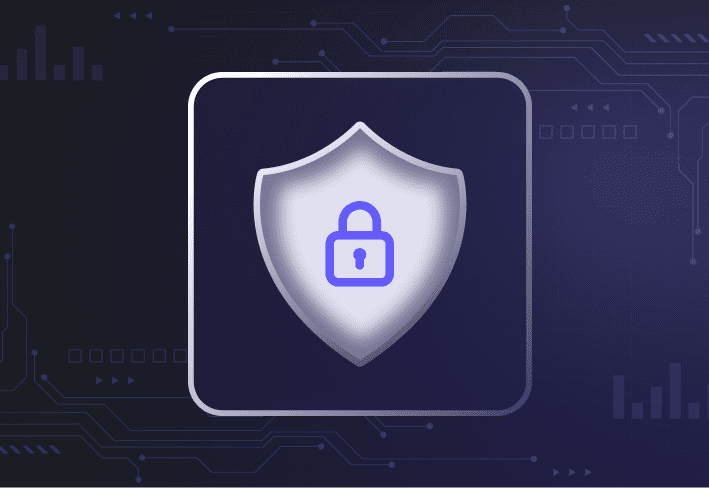When building an IT resume template, consider including the following:
Contact information
Work experience
Technical skills
Education
Certifications
There are some caveats and best practices for how to list this information in a way that captures a hiring manager’s attention (and — let’s be real — the attention of the automated system your resume meets first along its journey to a real person).
Let’s get right to it.
What to include in your professional resume template
No matter which jobs you apply to, you should include some standard information when searching for an IT job. We'll list them below — as well as pointers on what you should tweak for each resume you submit.
Contact information
Let’s start with the basics: your contact information. List details such as your name, phone number, email address, and location — even if the job you’re applying for is remote. Some organizations only hire in certain states, and it’d be a shame to get through five rounds of interviews only to realize your potential employer can’t hire you because of your location.
Pro-tip: Have a portfolio website? Consider using a version of your resume that redacts certain personal information, such as your phone number and email address. These precautions make it harder for cybercriminals to do their jobs, which is a great goal to keep in mind.
Your LinkedIn profile is another key item to include, particularly for IT jobs. Your professional presence online can help hiring managers get a quick grasp of the type of employee you are — as well as your background information, kudos received, etc.
Work experience
Time to make your work experience work for you!
Starting with your most recent employer, list your career history, including dates, titles, company names, and relevant job duties. For your IT resume template, it's okay to list broadly relevant job duties and achievements. But there's a great tailoring opportunity when submitting your resume to potential employers.
Take a look at the job description. Are there any duties required of your desired role that you’ve done in previous roles? If so, list them first for each relevant role where you were responsible for those duties. You can even borrow words here and there from the job description. This can help you get past the applicant tracking system (ATS) that some employers use to filter resumes.
Check out our blog for eight crucial (but underrated) skills you need as an IT administrator.
By the way, don’t get so wrapped up in technical details that you forget to draw relevant connections between jobs you’ve had and the job you want.
For example, say you’re applying for an entry-level sysadmin role that requires you to train staff members to use the technology in the environment. Your time as a cashier at Piggly Wiggly might not have had you training employees on super technical topics, but you did train those three new employees on how to work the cash register, clock in and out, and perform other standard operating procedures.
Showing that you’ve got some training experience can go a long way.
Technical skills
Now, let's get nerdy. You should have a section of your IT resume template dedicated to your technical skills. Consider things such as the following:
Which operating systems are you familiar with?
What programming languages do you know?
Which networking concepts have you worked with?
Have you ever managed a database before?
While your resume template should include this list, you can easily tailor this section to each job you apply for. Take a look at the job description and be sure the required technical skills for the role that you have are listed right at the top.
Education
Going in reverse chronological order, list your education. You may only want to include your highest-level degree if you need more space for your resume. For example, suppose you have an associate, bachelor's, and master's degree. In that case, you can just list your master's degree — as long as it's relevant to the job you're applying for.
Many people tend to stress over their education when applying for IT roles. Interestingly, sysadmins who have served as hiring managers at SmartDeploy and PDQ aren’t too concerned about candidates’ educational experiences.
“My experience has been that no amount of trainings and certs will prepare someone for everything they'll face, and when they inevitably are faced with something they haven't specifically been trained on/prepared for, being resourceful, able to learn on the fly, having good judgment, and testing everything (but not in production) goes a really long way and beats degrees and acronyms most of the time.” — Eric McCann, product manager at PDQ
In short, don’t be your own worst enemy just because you lack a degree or certification. If you have most of the other skills and experience an IT job requires, apply anyway.
Certifications
If you have any relevant certifications, list them on your resume. However, many hiring managers take certifications with a grain of salt. They’re just the first step in showing you have the knowledge and skills to do the job. And if you lack certifications, that often isn’t a deal-breaker. What’s more important is your willingness to learn and upskill.
How to avoid becoming your family's personal help desk center
Once you land that IT job, chances are everyone around you will consider you the IT genius they didn't know they needed. Check out this (lighthearted) read on how to avoid being your family's personal tech support center.
IT resume template FAQs
Should I include a professional summary or objective?
To be frank, the verdict is still out on whether you should include a professional summary or objective. Some hiring managers prefer them while others skip over them. It may come down to personal preference. If you do include a summary or objective, make sure it’s short (one to two sentences) and relevant to the specific job you’re applying for.
Should I apply for an IT job I'm not 100% qualified for?
Yes, you should absolutely apply for an IT job you’re not completely qualified for. If you have most of the qualifications in tow, don’t see yourself to the door before a hiring manager even gets a chance to talk to you. You can’t be hired if you filter yourself out before a company can screen you. Who knows? You may be exactly what they need!
How long should my IT resume be?
Your IT resume should be two pages max. If it’s any longer than two pages, consider cutting down your resume by going over it with a fine-toothed comb to find and cut any details that are irrelevant to the specific job you’re applying for.
Where should I create my resume?
You should make your resume in a word processor, such as Microsoft Word, if you want to make the safest bet. Remember that at first, you’re likely not writing for humans. You’re writing for the applicant tracking system, which needs to be able to easily scan your resume for keywords. It’s harder for ATS technology to scan PDFs because sometimes PDFs are viewed as images rather than documents. When in doubt, default to a word processor.
Note that if you want to incorporate any design elements, do so with caution if you plan to submit your resume as a Word document. Formatting can be lost between devices, and what looks great on your screen might look like the aftermath of a tornado on another screen. If you want to add design elements, consider sending your resume as a PDF, which will preserve those design elements.
With this information on your resume tailored to each job you apply for, you should be golden! And when you land that fancy IT job, be sure to swing by SmartDeploy’s website to make your life as an IT professional easy. See how easy device imaging can be with a free trial of SmartDeploy.



